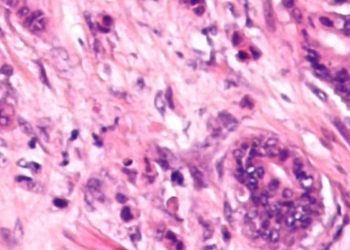Adjusted neonatal care coincides with decreased morbidity and mortality
Image: PD
1. From 2000 to 2009, neonatal intensive care units (NICUs) increased use of antenatal steroids, cesarean delivery, surfactant in the delivery room, and less-invasive respiratory support for very low birth weight infants (VLBW).
2. Decreases in steroid use for chronic lung disease, delayed surfactant use, and endotracheal tube ventilation in VLBW infants were also observed.
Study Rundown: From 2000-2009, evidence and recommendations for and against interventions for VLBW infants changed drastically. During the same period, morbidity and mortality among VLBW infants have improved. This observational study examined obstetric and neonatal care practices across North American hospitals with results that showed increased compliance with new recommendations. Supported practices for VLBW infants including antenatal steroids, cesarean delivery, early surfactant use and less-invasive respiratory support increased in use. Concurrently, practices that were not recommended, including delayed use of surfactants, steroids for chronic lung disease, and endotracheal tube ventilation, declined in use. While the results of this study do not allow for implied causation between the changes studied and improved outcomes, the diverse sample gives a strong illustration of changing practices in obstetric and neonatal care.
Click to read the study, published today in Pediatrics
Relevant Reading: Trends in neonatal morbidity and mortality for very low birth weight infants
In-Depth [observational study]: 669 North American hospitals participating in the Vermont Oxford Network from 2000 to 2009 were studied, with inclusion of infants weighing 501-1500g. Infants weighing under 500g were excluded as clinical practice addressing their medical problems varies widely. Data from 2009 was used as a reference for all analyses. Practices that increased included antenatal steroids and cesarean delivery. Practices that increased significantly included early surfactant use (AD 17.0%and less invasive respiratory practices such as nasal CPAP, nasal ventilation, and high-flow nasal cannula. Practices that decreased significantly included the use of steroids for chronic lung disease (AD -15.35), delayed surfactant use (AD -9.3) and endotracheal tube ventilation (AD -3.7%).
By Laurel Wickberg and Leah H. Carr
More from this author: European primary care lacks confidence in obesity management Acellular Pertussis vaccine less effective than whole-cell vaccine Teens who text and drive take other driving risks TV associated with higher BMI in teens American Academy of Pediatrics updates its Medicaid Policy Statement
© 2013 2minutemedicine.com. All rights reserved. No works may be reproduced without written consent from 2minutemedicine.com. Disclaimer: We present factual information directly from peer reviewed medical journals. No post should be construed as medical advice and is not intended as such by the authors or by 2minutemedicine.com. PLEASE SEE A HEALTHCARE PROVIDER IN YOUR AREA IF YOU SEEK MEDICAL ADVICE OF ANY SORT. Content is produced in accordance with fair use copyrights solely and strictly for the purpose of teaching, news and criticism. No benefit, monetary or otherwise, is realized by any participants or the owner of this domain.







